Review by Arman Zarmehr
In this critique, we intend to take a close look the various aspects of Rise of The Ronin, the new title from Team Ninja studio.
Team Ninja has a brilliant history and portfolio of various works across different genres, ranging from fighting and hack-and-slash to titles like Soulslike and action-adventure, all of which have been excellent and sometimes even pushing their respective genres a few steps forward. Today, we have a new creation from this studio, which unfortunately cannot be compared to the descriptions we had of many of their previous works.
Rise of The Ronin is a role-playing experience set in the heart of 19th century Japan. It aims to narrate an engaging story intertwined with many influential historical figures of that era while providing a deep role-playing experience. However, despite its excellent performance in some aspects, this game suffers from a severe identity crisis in other parts, ultimately resulting in a final product that is entertaining but not particularly memorable.
A close look at the end of isolationist Japan
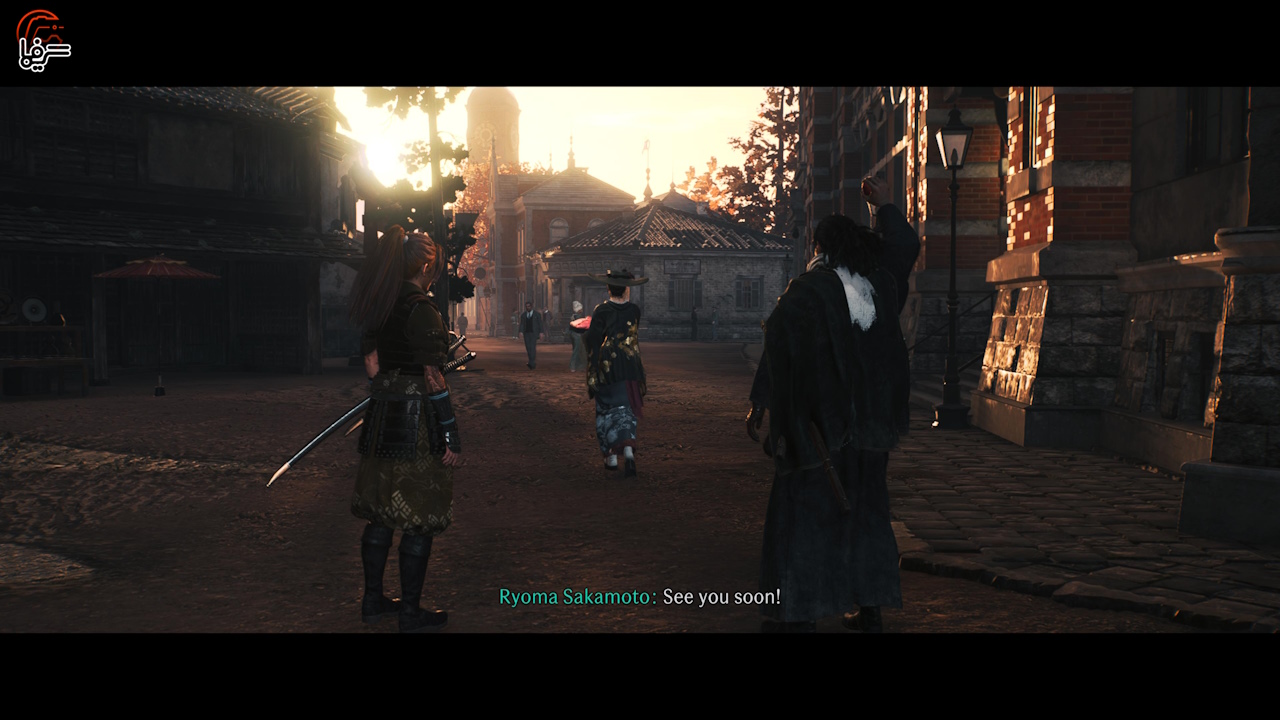
The story of Rise of The Ronin takes place during the Bakumatsu, or the shogunate era of Japan in the mid-19th century, a period known for its anti-Western policies and the military-centric Tokugawa Shogunate government. The story of “Rise of The Ronin” unfolds during the years when Western black ships reached the borders of Japan, and now the country and its authorities are under immense pressure from the West to open their borders to the world. In the midst of this, you play the role of one of the twins known as the Blade Twins, fighters belonging to the resistance group Veiled Edge, whose family has been murdered by the Shogunate government.
After the death of their family, these twins are trained and nurtured by the leader of Veiled Edge, known as Bladesmith, to eventually reach a point where you start experiencing this work. In 1853, the twins are sent on a mission by Bladesmith to retrieve a letter held by Matthew C. Perry, a prominent figure in the United States Navy, who is influential during that period.
During this mission, just as the twins gain the upper hand in the fight against Perry, a samurai nicknamed Blue Demon captures them. Meanwhile, you, as the main character you have chosen, are forced to flee in order to deliver the letter to Bladesmith while your sibling sacrifices themselves and confronts Blue Demon.
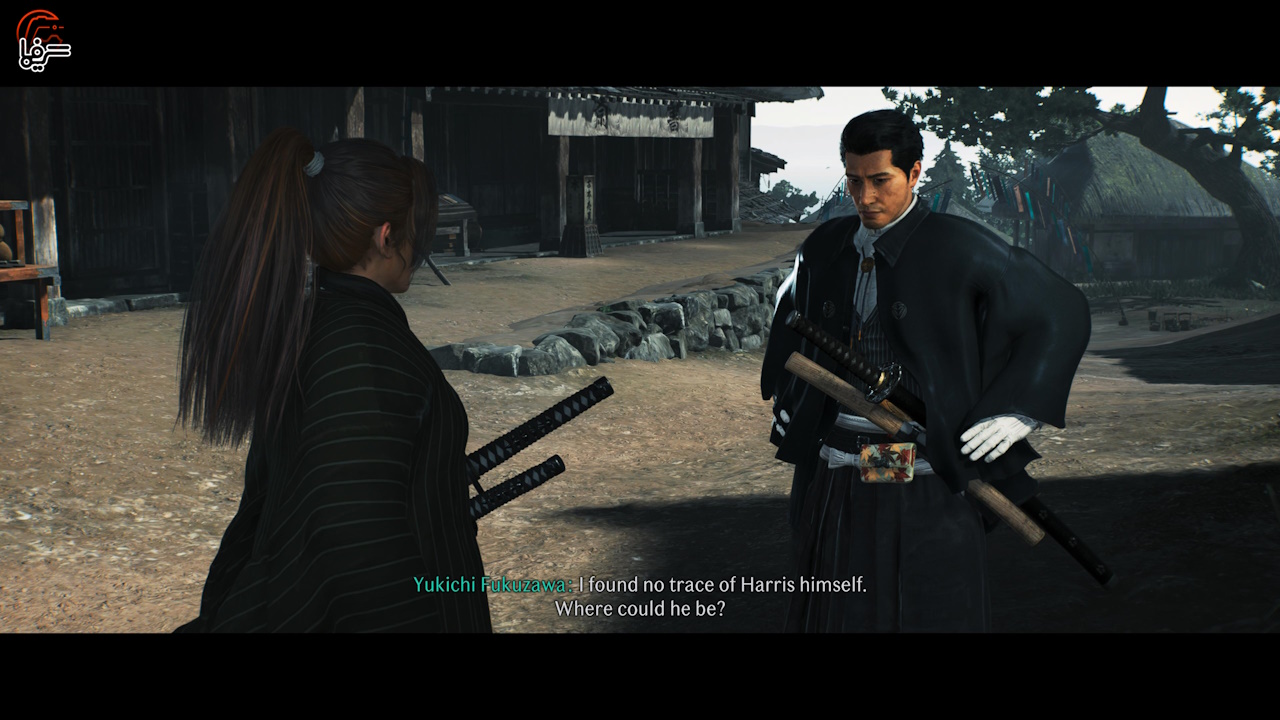
Eventually, after the Veiled Edge village is attacked by the Shogunate, you find out that your brother/sister is still alive. In pursuit of finding them, you embark on a long journey unaware that you will encounter some of the most influential figures of that era in Japan along the way, becoming entangled in various political matters and ultimately determining the fate of Japan.
In Rise of The Ronin, you carry a significant historical weight with you. Throughout the story, you will constantly come face to face with important political and social figures of that era in Japan, including Sakamoto Ryoma, Shoin Yoshida, Genzui Kusaka, and many others. However, not all of these characters are portrayed historically accurately; they are more of a cinematic interpretation. As you are engaged in a role-playing experience, your different choices throughout the story can alter the overall narrative and even change some historical events.
During your journey to find your sibling, you will encounter various characters and establish connections with them, and the nature of your interaction and closeness with these characters can evolve depending on your approach and choices.
This mechanic, introduced in the form of the Bond system in the game, allows you to determine the level of intimacy with secondary characters based on your approach and choices. Consequently, you will witness dialogues, choices, and even new situations related to those characters. Additionally, you will often face situations where you must decide whether to stand with or against the Anti-Shogunate group and assist the Pro-Shogunate group, which ultimately shapes your final relationship with these factions.

The main character of the game doesn’t differ much from cardboard and lacks any particular depth, so in ninety percent of the cases, they don’t even establish verbal communication with other characters in the game. Therefore, if you expect to form a strong connection with the protagonist of this game, I’m afraid “Rise of The Ronin” isn’t intended to fulfill that expectation.
However, on the other hand, some of the game’s secondary characters, such as Ryoma, have intriguing characterizations and can create a good vibrancy in the narrative flow. This experience heavily emphasizes its Bond system and is filled with various characters, each with their own goals, beliefs, and even specific problems, and increasing the Bond level with them opens more doors to delve deeper into their stories. Deepening your relationship with these characters is also directly linked to the gameplay, which we’ll discuss further.
In general, the storytelling of Rise of The Ronin spends relatively slow hours until it reaches a point where you can somewhat appreciate the story and the elements involved in it and immerse yourself in its political, social, and personal conflicts. However, ultimately, we’re faced with a narrative that has its moments of greatness and can sometimes be engaging in the moment, but nevertheless lacks any particular qualitative characteristic that would necessarily make it a memorable story.
A true samurai

If Team Ninja excels in any aspect, it’s in creating and implementing an engaging and challenging combat system, and I must say “Rise of The Ronin” truly shines in this regard. We’re faced with a strategic and challenging yet captivating and enjoyable combat system that rewards players well for their efforts in learning and improving their skills.
The first notable feature of the combat system in this game is its high variety, covering almost every taste imaginable. Are you interested in the traditional samurai fighting style with katanas? This game provides you with this weapon along with 8 different combat styles with fully customizable Movesets. Are you more into Western-style large swords? These weapons are also well diversified in this game. Perhaps you’re a fan of fast-paced combat and using two weapons simultaneously? No problem! Rise of The Ronin offers you these weapons with several different combat styles as well. Did I mention the presence of firearms like pistols, rifles, or bayonets? How about traditional archery?
The level of weapon variety and the depth of the combat system in this title amazed me to the point where I can’t recall any other recent work that has achieved such diversity in this regard. You have the ability to wield two different classes of cold weapons simultaneously, and you can also choose your character class at the beginning of the game, resulting in better performance with certain weapons than others. However, this doesn’t mean that fighting with weapons outside of your class won’t be enjoyable at all.
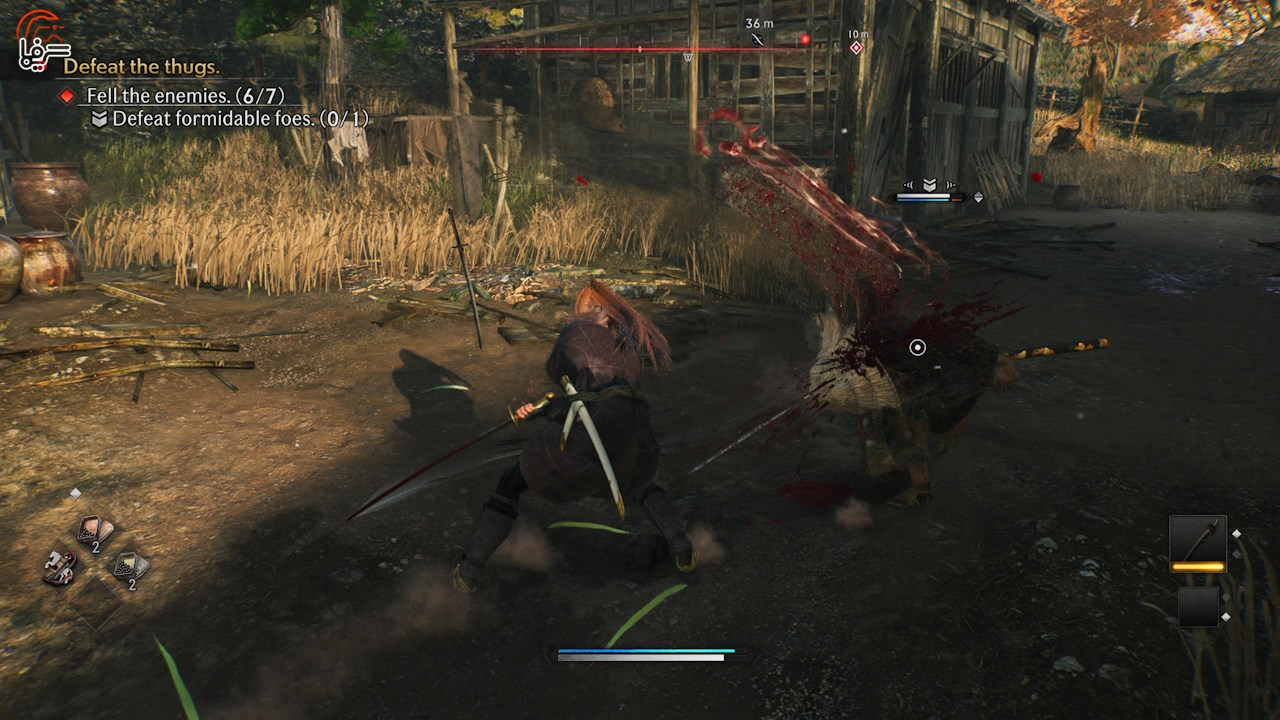
Personally, I chose a class that had Paired Swords as one of its main weapons. However, as I had a strong inclination towards the Katana, I switched to that class later in the game, and I didn’t feel for a moment that fighting with it wasn’t enjoyable. Therefore, it can be said that the game, despite its character class system, provides players with a great deal of flexibility in combat, allowing them to become familiar with various classes and multiple weapons and ultimately choose those that they enjoy fighting with the most.
As mentioned, the ability to carry and switch between two cold weapons is provided for the player, and alongside that, you can also choose a hot weapon, each of which has its own unique functionality. Additionally, you also have access to a Grappling Hook, which can prove very effective during battles.
The combat mechanics of this game have similarities to Soulslike titles in terms of defensive aspects, while inheriting some traits from previous Team Ninja hack-and-slash titles in its offensive aspect. The general combat process consists of parrying, blocking, and following them up with appropriate strikes based on the enemies’ situations and conditions. However, beneath this layer, numerous factors and mechanisms, such as small gear cogs, are constantly turning to ultimately bring fluidity to the combat process.

One of the most important features of combat in this game is that the approach, style, and fighting stance with the weapon you use, as well as the surrounding environment, vary significantly against each enemy. Just as you have unique weapons with different combat styles, your enemies also possess these combat styles. Therefore, you must optimize your weapon and fighting style against each of them according to their weapon and combat style.
The combat styles of each weapon class become available to you as you increase your Bond level with some of the game’s characters. Each of these combat styles has its own set of moves, speed, executions, and overall combat stance, adding a great deal of variety to this aspect. For each of your weapons, you can simultaneously choose three different combat styles and easily switch between them during battles based on the circumstances.
The effectiveness of the current weapon and combat style you’ve chosen is displayed as a symbol in red (suboptimal), white (neutral), and blue (optimal) next to the enemies’ health bar. You must adjust your approach, combat style, or even your weapon in response to any threat you encounter. Therefore, depending on the weapon, combat style, and its unique characteristics, your strategy against each adversary also changes accordingly.
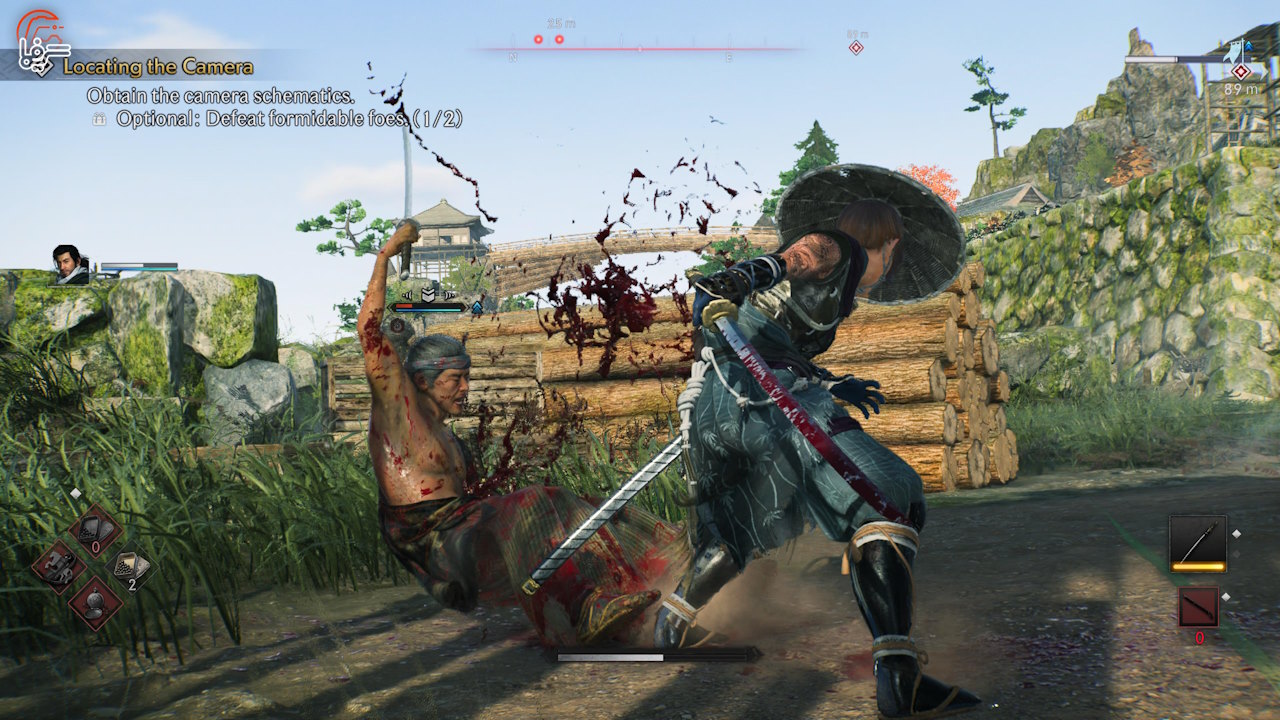
During battles, much like many Souls-like titles, Parry is considered a vital mechanism that is almost imperative to master in this game. Succeeding with each Parry reduces your opponent’s resistance much like in Sekiro, and if you manage to completely break their guard, your opponent will be stunned for a short period, allowing you to perform an Execution.
However, alongside the discussion of the mechanical aspects of combat, the presentation and how this section is delivered is also important. If I were to liken it to something, it’s like a “smooth flow,” where once you understand the mechanics of combat, improve your skills, and most importantly, get accustomed to the Parry mechanism of this game, you’ll find yourself in various combat scenarios that are highly fluid and enjoyable, while also showcasing considerable weight.
The strikes feel impactful, and the clash of swords is well felt in this experience. Executions are weighty and enjoyable, and the overall combat flow is highly dynamic and engaging thanks to the high diversity and adaptable nature of this system.
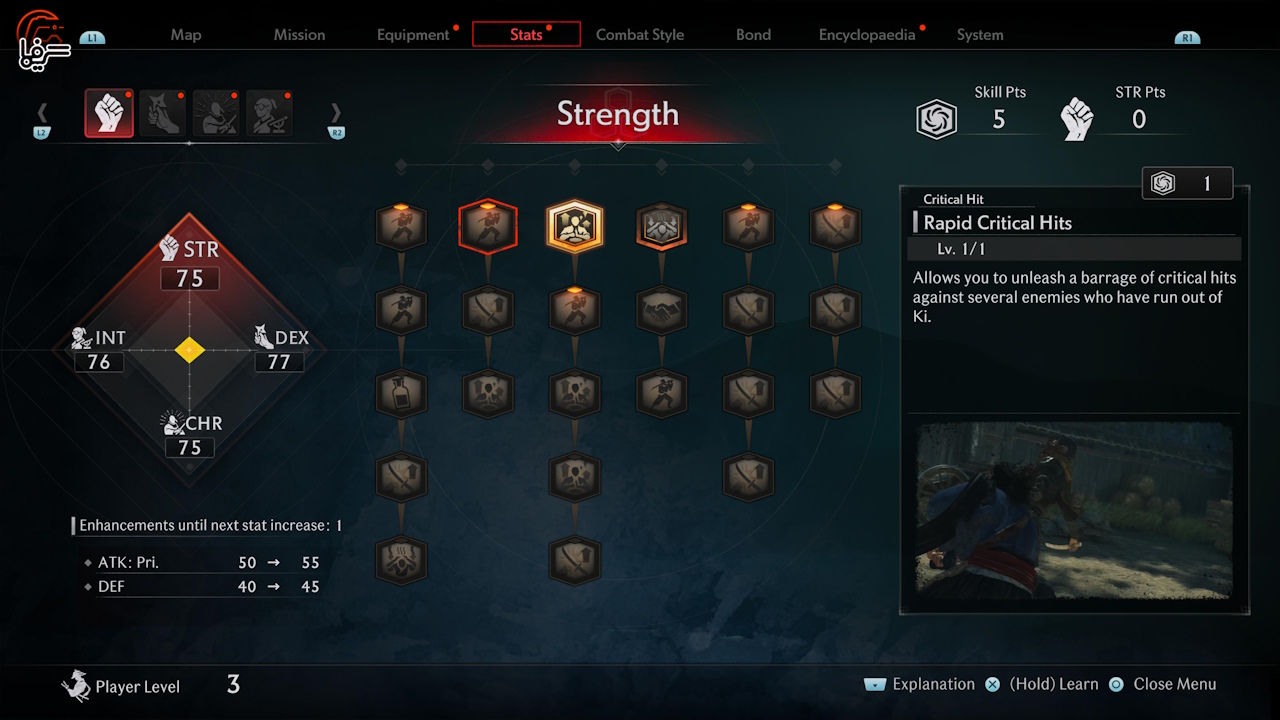
This game also offers you an extensive skill tree, divided into four different categories, each connected to one of the dimensions of your character: Strength, Charisma, Dexterity, and Intelligence.
By upgrading your character in each of these groups, you will gain new abilities that will sometimes come in handy in battles, negotiations, and many other mechanical aspects, ultimately making the performance of this skill tree targeted and impactful.
As mentioned in the introductory section, Rise of The Ronin places a strong emphasis on its Bond system, and just as we discussed its influence on the combat system, it’s worth talking about its impact on the overall gameplay experience as well.
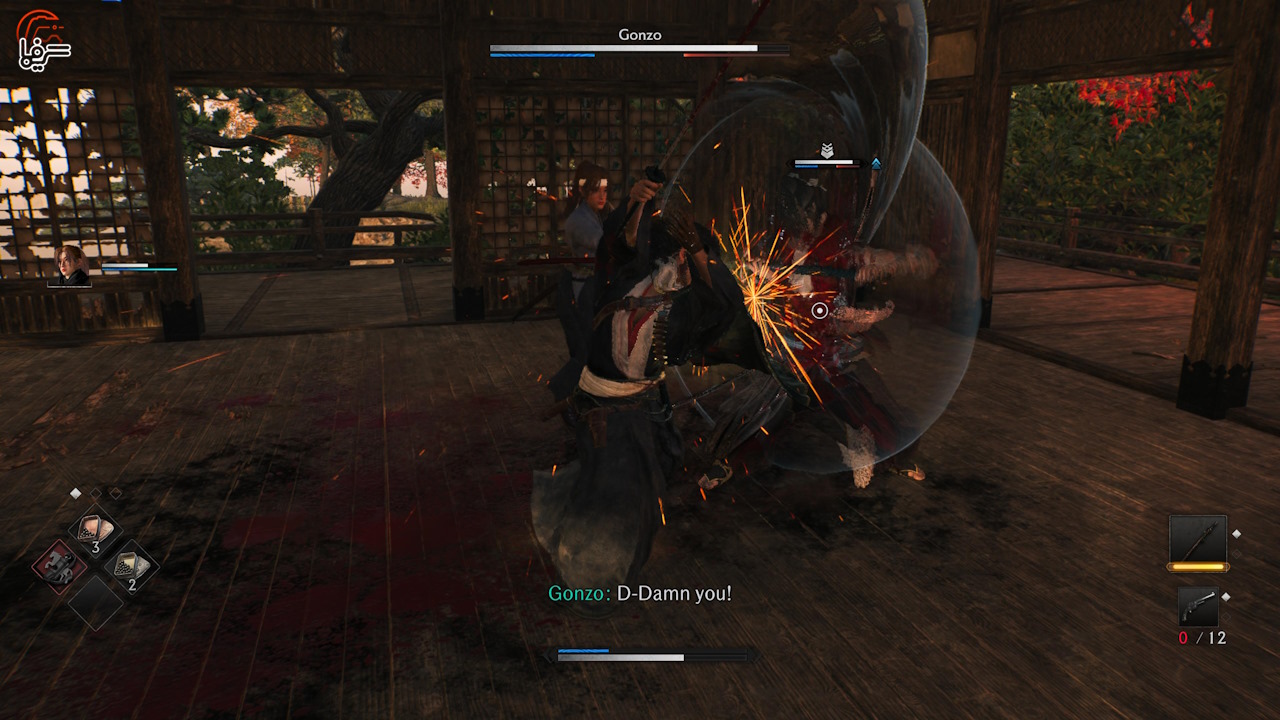
During your experience with this game, you will encounter levels that offer you the possibility of experiencing Co-op gameplay with your friends, allowing you to invite them and delve into the levels online. However, alongside this feature, there is also the possibility of experiencing these levels alongside the allies and characters with whom you have become acquainted throughout the story and strengthened your Bond!
Before starting these levels, you will have the option to choose two characters to accompany you. Moreover, it’s interesting to note that during these levels, you can switch between the protagonist and your allies on the fly and play in their roles!
Each of these characters also has their own fighting style and even unique weapons. For example, Ryoma has a unique shotgun that can fire in rapid succession. Additionally, the ability to switch between characters adds a strategic layer to the combat, allowing you to adapt to the situation by switching between playable characters and improving your combat performance.
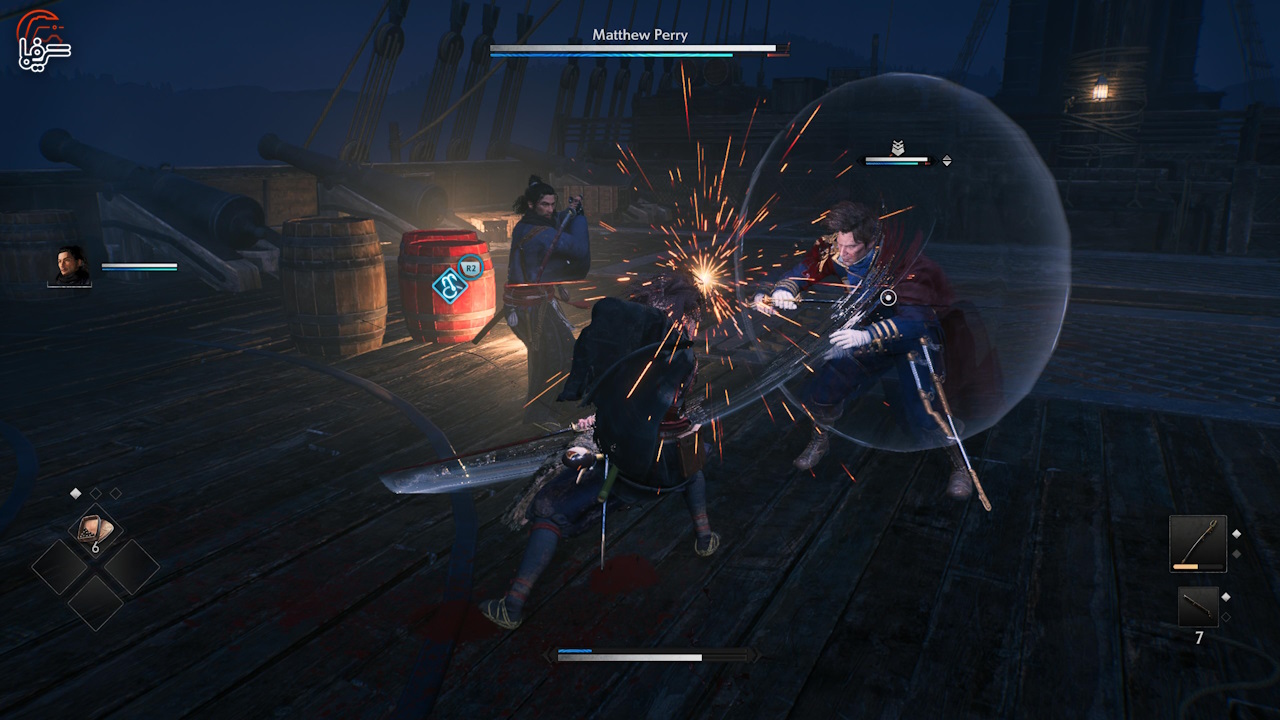
In most of these missions, you will also face a powerful boss, which brings us to another strength of this game; the boss designs in this title are excellently crafted, with each one standing out distinctively from the others and presenting dynamic and highly engaging challenges to the player. The intelligent and sometimes creative designs of the bosses make facing each of them a fresh challenge and a different cognitive process that requires focus, patience, and logical and strategic reactions.
At times, I found myself spending perhaps about an hour in combat, facing defeat, and attempting again against a boss. However, this process not only did not become exhausting but truly with each failure and better understanding of how to combat the boss in the next round, I corrected my mistakes and got one step closer to overcoming them.
This very fact ultimately made the defeat of each boss throughout the game experience effectively convey the feeling of victory and overcoming a significant obstacle. As you engage in these battles and gradually gain a better understanding of your adversaries, you feel that your combat process with that boss transcends normalcy and turns into a dance filled with movement, dynamism, and rhythm!
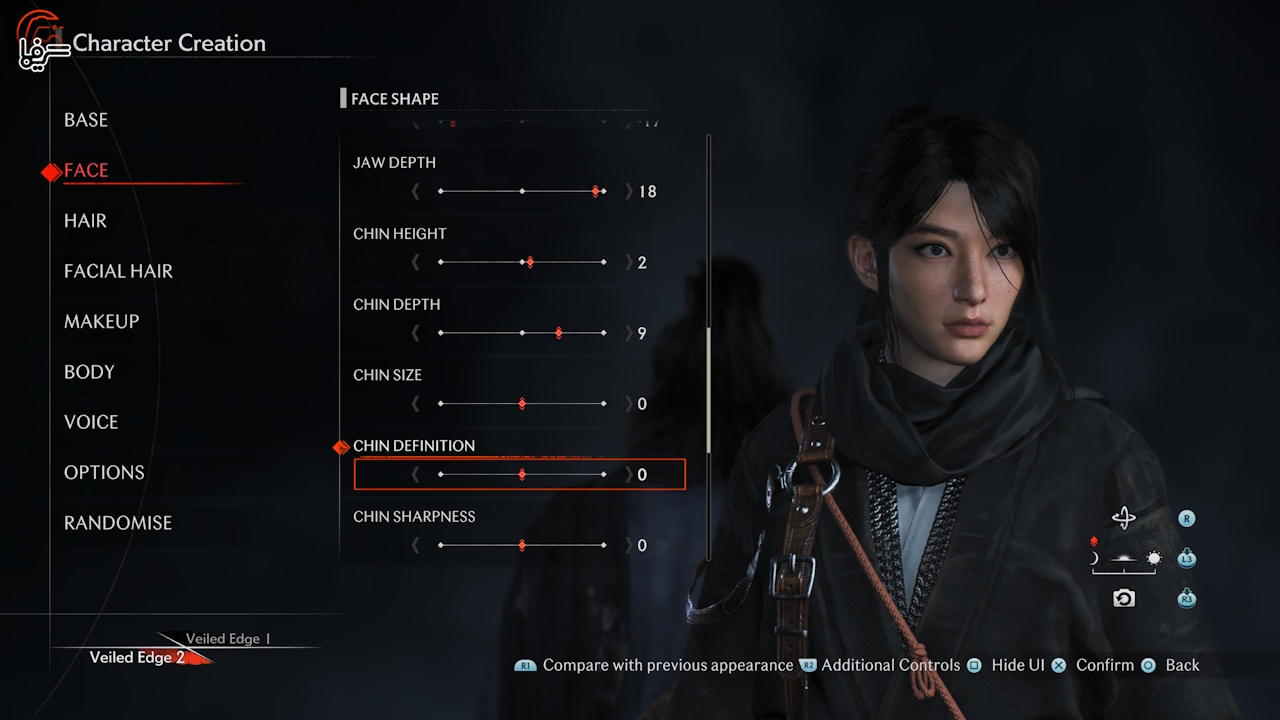
Rise of The Ronin also offers a very extensive character creation system that allows you to deeply personalize the visual characteristics, structure, and appearance of the game’s protagonist. Alongside this system, we have a customization section that allows you to equip your character with new outfits and weapons. Once again, in this section, we witness a very high level of variety as there is a wide range of armors, traditional Japanese garments, and even Western outfits available in the game, alongside various weapons.
Some of these items have a direct connection to your approach towards the Anti-Shogunate and Pro-Shogunate factions because each of these factions has its own exclusive store. By collaborating with the Anti-Shogunate, you’ll gain access to customization items, traditional Japanese armors, and weapons through their store. Conversely, if you cooperate with the Pro-Shogunate, you can acquire the mentioned items but with a Western theme through their exclusive store.
You also have a Longhouse as your residence, where you can relax alongside your companions, decorate your home, or even customize the visual characteristics or attire of your character. Furthermore, since there is a great variety of appearances among the armors and overall attire items in the game, the developers have incorporated a section in the Longhouse that allows you to personalize your outfits, armors, and weapon appearances without the need to change your currently equipped items and deprive them of their unique attributes.
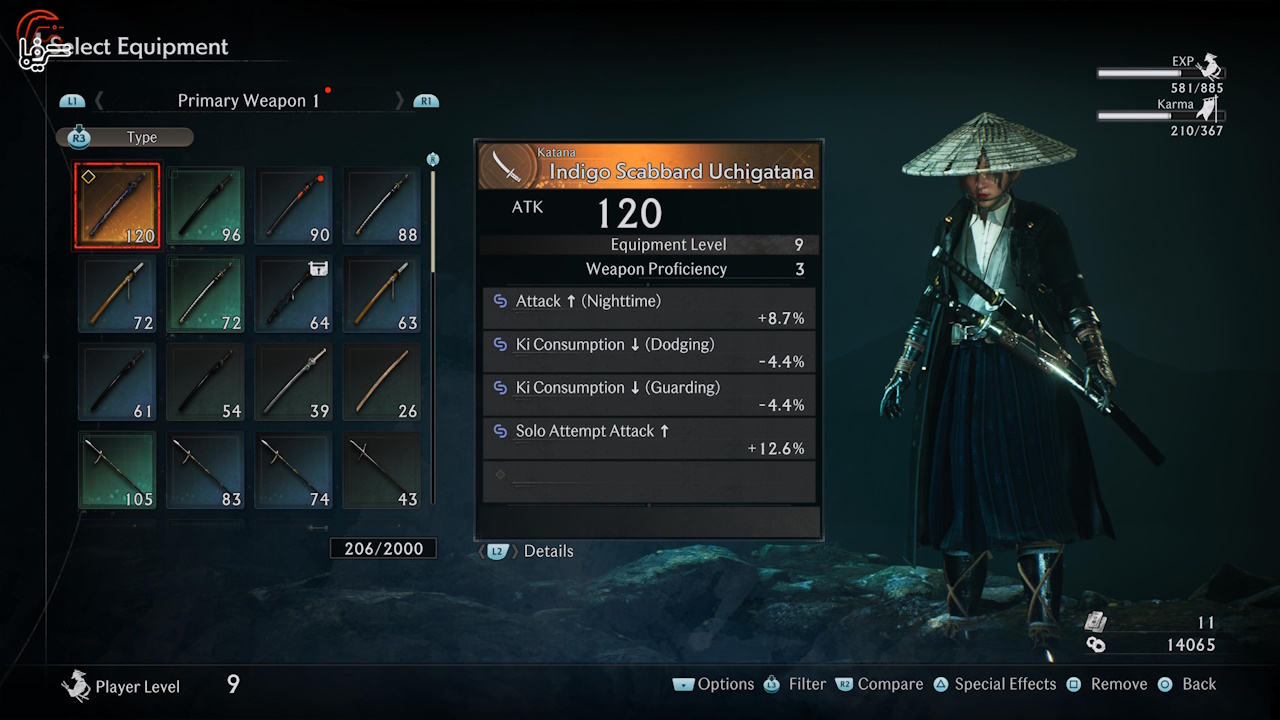
However, despite all this visual diversity, unfortunately, the loot system in this title is very inefficient, and the game overall is severely cluttered in this regard without adopting a logical approach to balance and make the process of finding new items more engaging. Throughout the gaming experience, you will constantly encounter loot that is sometimes weak or pointless, yet the game always throws them at you, leading to a situation where you eventually open your inventory and realize you are carrying a hundred identical items that serve no purpose.
On the other hand, the developers have failed to create a proper balance in terms of the power attributes and unique perks of weapons. Because of this, as you progress in the game and surpass the early hours, and with the introduction of more powerful items, these aspects lose their importance and become entirely futile. Nonetheless, the game still expects you to act as a warehouse for dumping piles of useless loot.
Rise of The Ronin also features numerous side quests, many of which are designed and implemented in a very outdated manner, quickly losing their diversity, freshness, and appeal. Of course, there are exceptions among them, but overall, the side activities in this game appear very shallow.
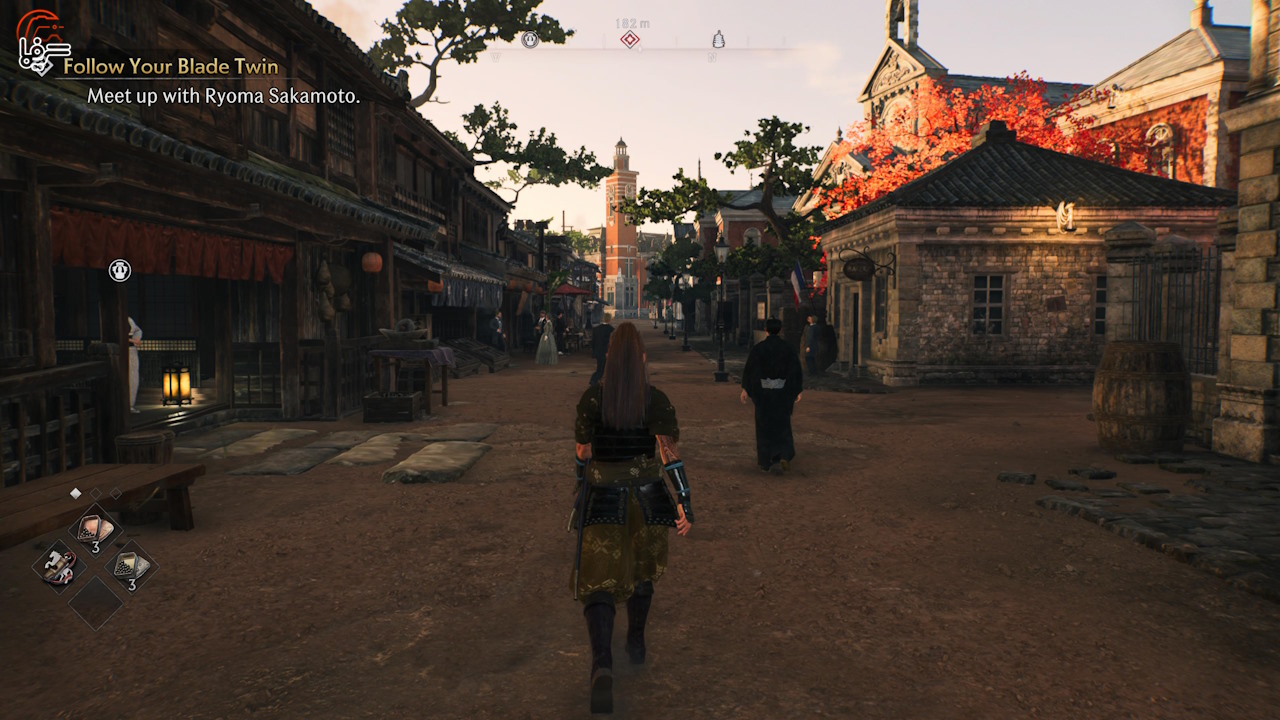
This issue culminates in a very cluttered map full of unappealing and shallow activities. Personally, during my gaming experience, as soon as I wanted to engage in some side activities, the qualitative weakness of the game in this aspect hit me like a strong wave, reminding me to stick to the main story rather than delving into these superficial side quests.
However, this becomes problematic when we remember that we are talking about a role-playing game that heavily relies on the power level of your character and often requires you to engage in side activities to level up your character, which ultimately significantly reduces the game’s appeal in this regard because the depth of the side activities does not align with contemporary standards.
Therefore, the world of Rise of The Ronin is a cluttered yet ultimately shallow world, lacking engaging and immersive side content. However, exploring the environment and moving through it can be enjoyable, thanks to attractive features such as the Grappling Hook and Glider at your disposal.
Beautiful but Outdated
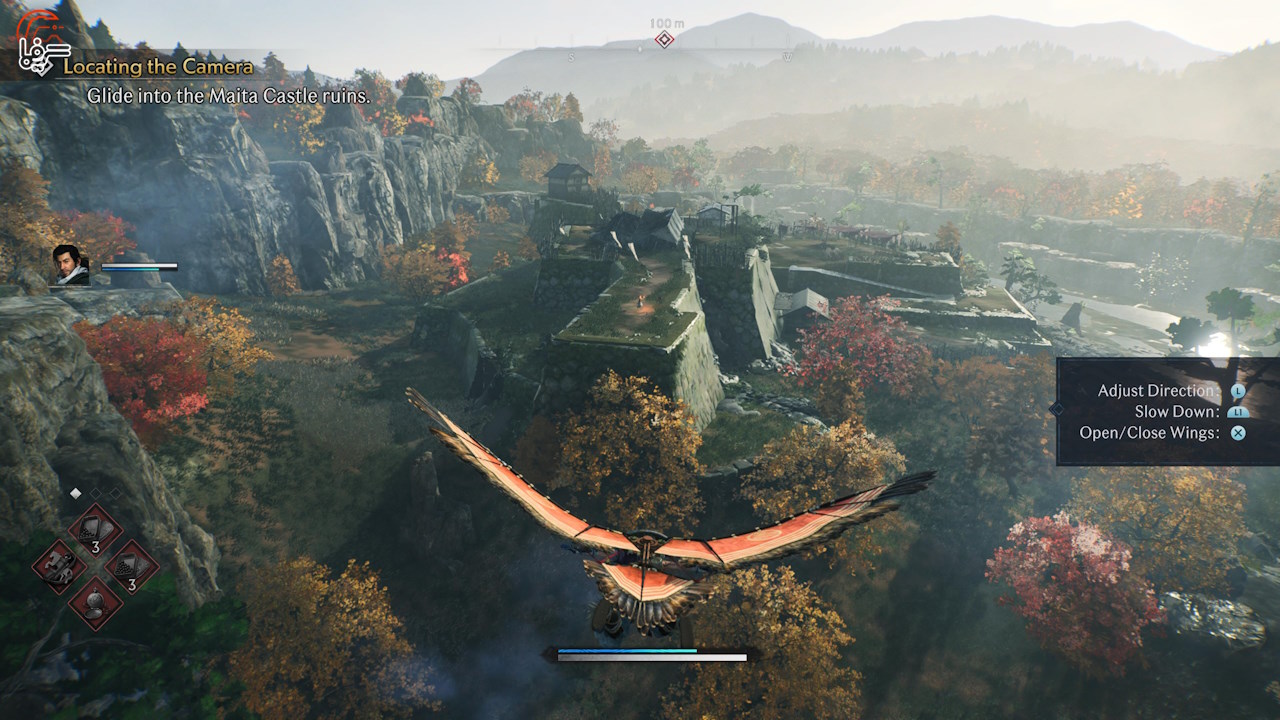
As you’ve noticed so far, Rise of The Ronin excels in some aspects while adopting superficial and sometimes weak approaches in others. Now, let’s evaluate the performance of this title in the graphics and environment design department.
The world of Rise of The Ronin appears beautiful from afar, but when you take a closer look, you’re faced with a gloomy and dry structure that truly doesn’t convey a sense of dynamism and liveliness. The game and its world can be likened to Ryan Gosling’s character in the movie Blade Runner 2049. If you see that character from a distance, you might perceive him as a charming and mysterious man, but if you get to know the depth of his personality a bit more, you’ll realize his profound sense of melancholy and isolation.
This experience and its world initially convey the same feeling. When the game logo appears, and you gaze at the vast and beautiful world of the game from the top of a hill, you’ll be fascinated and eagerly interested in exploring it. However, after a few hours, you’ll feel like you’re in a world that is heavily artificial, and sometimes outdated design approaches have been adopted. Unfortunately, unlike Blade Runner, there is no Ana De Armas in this game to momentarily pull you out of the gloomy world you’re stuck in.
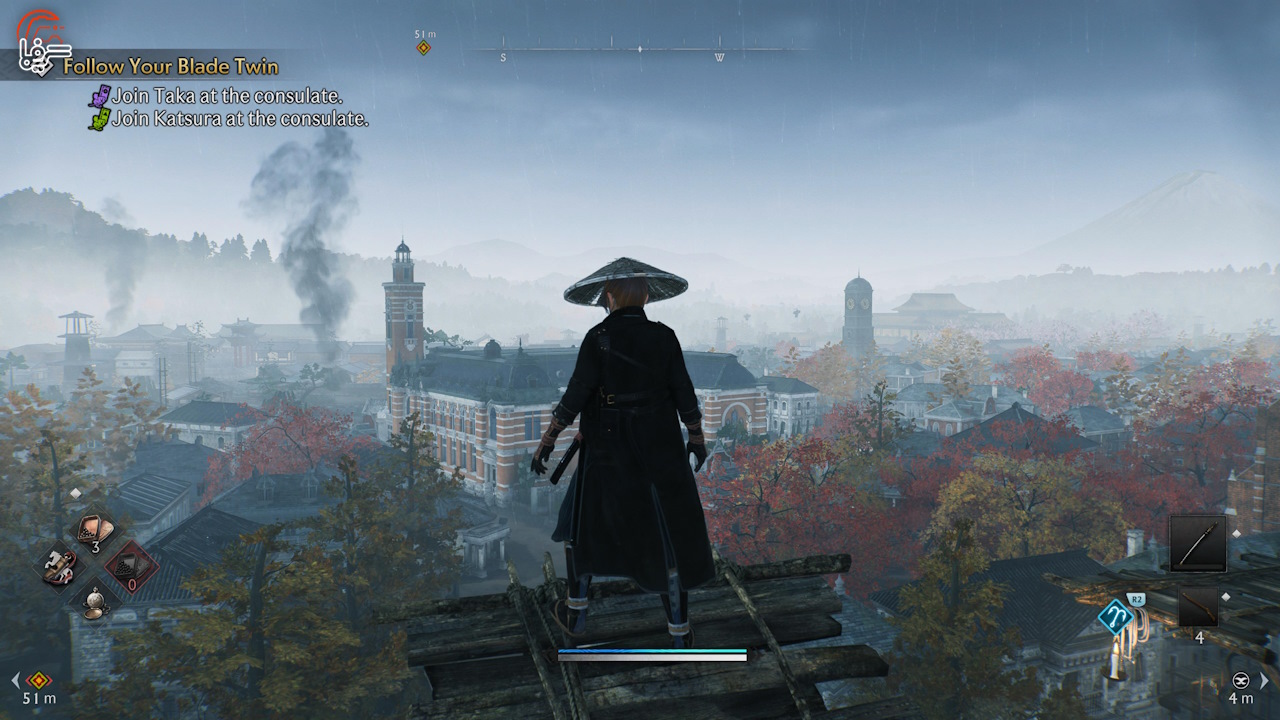
But even in the visual graphics department, we’re not facing satisfactory performance; while the overall design of the Japanese appearance and its various regions can be beautiful, ultimately, when you look closely at the details of the environment, game characters, and faces, you realize that there isn’t much depth in this beauty. This issue entirely relates to Team Ninja’s outdated graphics engine, which, for unspecified reasons, doesn’t seem inclined to upgrade.
Rise of The Ronin enters a scene where a title like Ghost of Tsushima is already present, almost serving as a model and standard for works with this theme. Therefore, comparing this work with Ghost of Tsushima is quite common. Comparing this game solely in terms of environmental design and visual graphics with Ghost of Tsushima clearly shows that despite being faced with a title specifically released for a ninth-generation console, it actually demonstrates a weaker performance in terms of quality compared to an eighth-generation title released four years ago!
On the other hand, the music and soundtracks of the game aptly embrace the overall style of the game and the duality between Western and Eastern cultures. Alongside this, the performance of the developers in sound design has also been commendable. Personally, I experienced this game in Japanese, and the Japanese voice actors did an excellent job of bringing the various game characters to life in different situations. Additionally, the sound design of the weapons is acceptable, and the impact of swords during combat effectively conveys the weight and heaviness of the weapons.
The Verdict
Rise of The Ronin falls into the category of games that excel in some aspects while appearing mediocre or even outdated in many other aspects. The different parts of Rise of The Ronin always seem to counteract each other; on one hand, we have a fluid, adaptable, and diverse combat system that can be highly enjoyable, while on the other hand, we have an unbalanced and sloppy loot system, superficial side activities, and a shallow game world, ultimately leading to the game staying stagnant in its place. This issue prevents the experience from ever reaching its peak and realizing its full potential. If you’re interested in the overall theme of this game, there’s still an entertaining experience within it that can be worth experiencing at least once.
Pros:
|
Cons:
|
7/10
This game was provided by cdkeyshare store and experienced on the PS5.


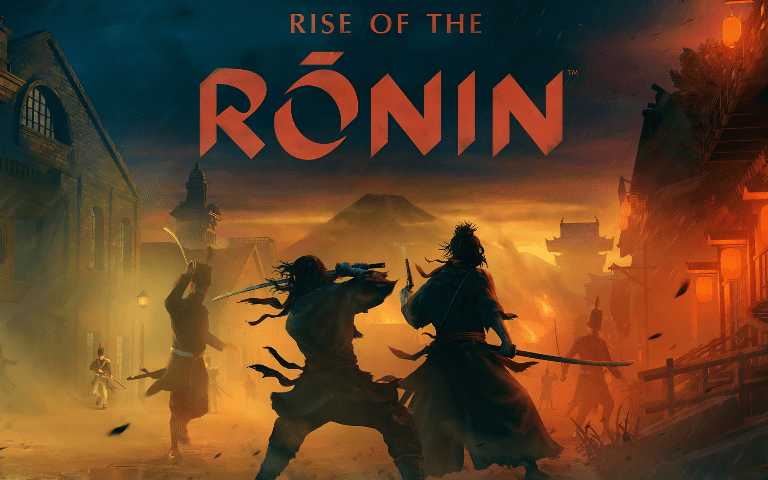
Comments